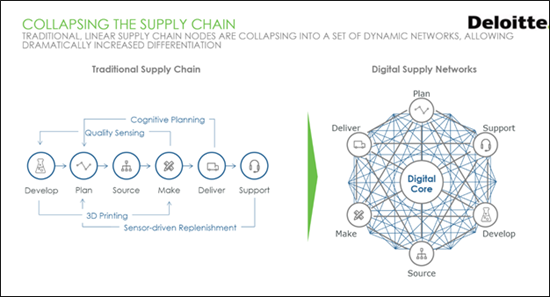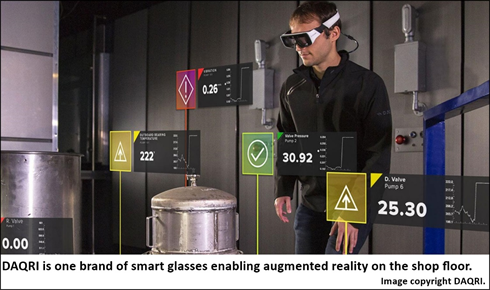A Pragmatic Approach to Adopting Industry 4.0
In a previous article on VALVE, we queried if results were matching the hype for manufacturers adopting the Industrial Internet of Things—also known as Industry 4.0.
#iiot
For manufacturers who want to stay competitive, it is essential to take a pragmatic approach to accelerate their performance with Industry 4.0, and a recent webinar from Industry Week laid out basic steps that can be taken to achieve this goal.
Kent Eriksson is senior advisor, IoT Transformation, Advisory Practice, at PTC. “If you take the approach of trying to be the best in all aspects at once, you will fail,” he said. “If you wait and don’t do enough, your competition will outpace you.”
Just like instituting LEAN systems, adopting Industry 4.0 can be done over time, but you must be practical and create a structure that you can implement in small portions, “like eating the elephant one bite at a time.” Eriksson said, “You need a vision, an ecosystem to adapt to it. You need to be able to prioritize and govern according to the current pace and activities. Then take a moment to analyze and adapt. It’s important to be agile—use lean management techniques in the digital sphere as well.”
Establishing the Foundation for an IIoT Strategy
PTC suggests there are three pillars that must be considered when implementing a strategy to integrate successfully in the IIoT space.
- Products: What you are now producing and what you will be producing in the future. Prepare your facility with a proper set of secure networks that can protect your factory equipment from intrusion and at the same time provide access to external products and services that will be used during manufacturing and testing of your products.
- Infrastructure: Defines the resources that you have today and what you believe you will need in the future to produce your products. Prepare your processes and infrastructure by considering that your products will most likely be tailored for specific customers or applications.
- People: Represents the base of knowledge and skills that you can leverage into the future and the investment in your staff that will provide the capability to operate your factory in the future. Engage your people in organizing and assembling your factory to be nimble and technology enabled (not technology controlled).
It is important to consider these three pillars from the outset and to keep the goal in mind always: to improve the business end-to-end, from the shop floor to integrating in a digital supply chain.
Another presenter in the webinar, Stephen Laaper of Deloitte Consulting, pointed out how the IIoT has impacted the entire supply chain.
“No longer is the supply chain linear,” he said. “The data within the supply chain is now moving back and forth in a circular fashion. There is no latency in information sharing.”
Not only does the information move back and forth in the supply chain, it also moves across the supply chain, between the physical and digital worlds. This is made possible because of several integrated DSN technologies or capabilities: sensors and wearable technology, digital scanning, cellular, satellite & Wi-Fi communications, video and spatial analytics, cognitive and artificial intelligence and machine learning. Virtual reality, intelligent workflow automation, machine controls and additive manufacturing are all made possible by this digital flow.
The challenge is to ensure that you are getting information to the right people at the right time.
One powerful example is that of augmented reality (AR). At its core, AR is a set of technologies that superimposes digital data and images on the physical world, basically by transforming volumes of data and analytics into images or animations that are overlaid on the real world. In manufacturing, it is most commonly used in the form of eyeglasses that superimpose production, assembly or service instructions on physical objects, like machines. Hundreds of companies are experimenting with this and AR is fast becoming the way training is accomplished for new systems and machines in factories.
While augmented reality can help advance workers on the shop floor and warehouses, virtual reality can help train employees across a variety of failure modes that are almost impossible to replicate in the real world. When those failure modes are created in the virtual world, workers are trained and can respond quickly and appropriately to emergencies. This situational awareness also helps mitigate hazards.
There are endless possibilities and capabilities in the digital operations space. But you must consider which characteristics are the most important to your operation/business and how to use those diagnostics to narrow down to your goals.
Five Characteristics of a Valuable Digital Supply Network (DSN)
Companies are using a variety of technologies, but according to Laaper, there are five characteristics that make a digital supply network work.
- Always-on Agility: DSNs continuously pull traditional datasets along with new datasets that can be sensor-based or location-based. With this, the supply network can react rapidly to changing situations.
- Connected Community: Real-time, seamless and multi-modal communication and collaboration with suppliers, partners and customers. With everything connected, insights from all parties are standardized and synchronized so that everyone can benefit from the information.
- Intelligent Optimization: A bi-directional loop of learning is created by combining humans, machines and data-driven analytics. In this way, decisions made between humans and machines can create solutions on the spot.
- End-to-End Transparency: By using sensors and location-based services, you can track material flow, synchronize schedules and balance the needs of both supply and demand side.
- Holistic Decision Making: when information is transparent across all functions of the company, performance can be optimized, and financial objectives can be achieved across all areas. It also means that if there must be trade-offs in favor of one area over another, the decisions can be made considering the network as a whole as opposed to individual silos of work or interests.
By achieving these digital goals, companies can become more profitable not only by improving operational efficiency but also by having the capacity to create new business opportunities with Industry 4.0.
Kate Kunkel is senior editor of VALVE Magazine.
1Source: 2017 SCM World Survey of Global Supply Chain Chief Officers
RELATED CONTENT
-
Flowserve Launches New Limitorque QX Series B Quarter-Turn Smart Electric Actuator
New actuator streamlines user experience and accelerates commissioning.
-
CASE STUDY: Building the World’s Most Secure Data Center Inside a Mountain
Securing data is vital to a world that has come to depend on it. All options are on the table as long as they deliver added protection.
-
Monitoring Valve Health via the Internet
Most valve end users are already using smart valve positioners on some control valves, but they may not have time to check the valve diagnostics software to notice if any valves are developing problems.












 Unloading large gate valve.jpg;maxWidth=214)